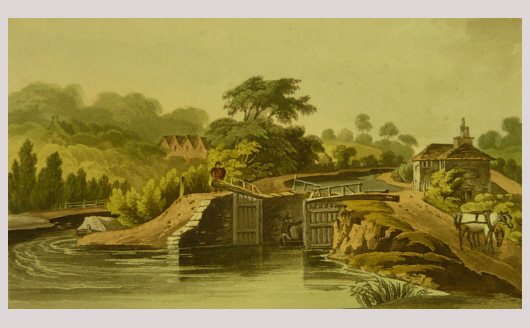The Grand Union Canal
The canal movement in the second half of the 18th century, coupled with the turnpiking of the roads, stimulated internal trade and produced a much increased flow of goods to the ports. The canals and the new roads made the Industrial Revolution possible. At Kings Langley the flow of the River Gade was channelled and controlled.

The section of the Grand Junction Canal (the Grand Union Canal from 1929) from London to Boxmoor was opened in 1797. To begin with it was used solely for goods,including Welsh slates and imported machine made bricks which gradually replaced local building materials. Coal from the Midlands proved much cheaper.Local produce was taken up to the capital and the barges (or narrow boats as they were known because they had to be no wider than seven feet and might be as long as seventy feet) came back with loads of manure and street sweepings. These boats carried up to sixty tons and were hauled by mules and donkeys as well as horses.
Before long the canals were carrying passenger services as well as goods. Packet boats, using relays of horses in the same way as stage coaches, were able to keep up average speeds of around eight miles an hour.
The building of the canal affected the life of the village in ways we might not now expect. At least two of the inns (The Griffin and The Boatman in Water Lane) had stabling for tow-horses; and another (The Lamb at the junction with Church Lane) had a tackroom for their harness when the boatmen stayed overnight.
Before the end of the nineteenth century steam powered boats came into general use. Many of these were able to tow a second unpowered boat or `butty'. Steam power went out in the early 1930s to make way for the diesel engine.
When the canal was first built it must have been the greatest boon to the farmers of the neighbourhood. However, its importance as a principal means of transport was shortlived, since it was overtaken before long by the new railway (opened in 1837). Because of the greater speed of the trains the canal was unable to retain the traffic in perishables and passengers but it still kept going for a long time with the transport of heavy goods. It was reclassified as a cruising waterway in 1968.
Adapted from Palace, Priory and Mills KLLH&MS (1987)




